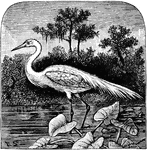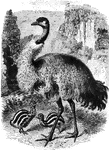154 illustrations of birds including: dacelo, dickcissel, dipper, diver, dodo, domicella, dotterel, dove, dovekie, drongo, duck, dunlin, eagle, egret, emu, epimachus, and erne

Golden Eagle
The Golden Eagle, chief of the Falcon family, has its home in the mountainous districts of Europe, Asia,…
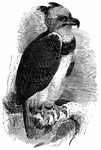
Harpy Eagle
Genus Harpyia, it is one of the largest, most fierce, and powerful eagles. It has a crest of…

Imperial Eagle
The Eagle is endowed with immense muscular vigor, and is therefore, able to carry off prey of considerable…

Imperial Eagle
The Eagle is endowed with immense muscular vigor, and is therefore, able to carry off prey of considerable…
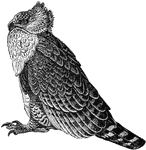
Martial Eagle
The Martial Eagle (Polemaetus bellicosus), is Africa's largest eagle and is the only member of the genus…
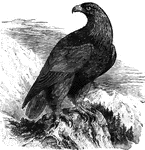
Royal Eagle
Also known as the common eagle of Europe, (A. fulvus) these large eagles nest on the inaccessable…

Sea Eagle
"Eagle is a name given to many birds of prey in the family Falconidæ. The golden eagle, the white-headed…

Sea Eagle
A sea eagle (also called erne or ern) is any of a group of birds of prey in the genus Haliaeetus in…
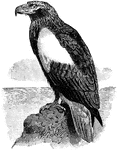
Steller's Sea Eagle
The Steller's Sea Eagle (Haliaeetus pelagicus) is a large bird of pray in the Accipitridae family of…
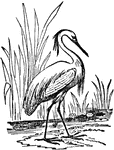
Egret
"A name often given to various species of Heron, particularly those which, at least during the breeding…

European Great White Egret
"Herodias. Great Egret Heron. Character of Ardea proper, excepting in plumage; color white; no crest;…
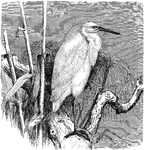
European Little White Egret
"Garzetta. Small Egret Herons. Color white; and occipital crest, and short recurved train of stiff-shafted…
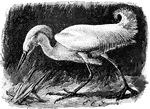
Snowy Egret
The Snowy Egret (Egretta thula) is a small white heron in the Ardeidae family. It was also known as…
White Egret
The Great Egret Ardea alba, also known as the Great White Egret, or Common Egret, is a wading egret,…
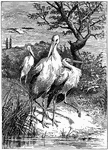
Egrets
An egret is any of several herons, most of which are white or buff, and several of which develop fine…
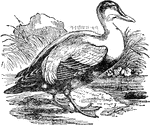
Eider Duck
The Common Eider, Somateria mollissima, is a large (50-71cm body length) sea-duck, which is distributed…
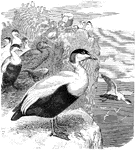
Eider Ducks
"Somateria mollissima. European Eider Duck. Bill with lateral frontal process extending on each side…
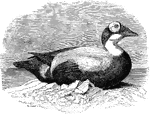
Spectacled Eider
"Somateria fischeri. Spectacled Eider. Bill (in both sexes) peculiar in the extension upon it of dense…
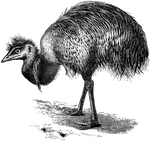
Emeu
An Emeu "Dromaeus novae-hollandiae, of the interior Eastern Australia, which extended in times past…
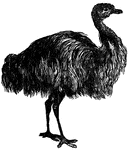
Emu
The Emu, a native of Australia, is nearly as large as the Ostrich, but has shorter legs and neck and…
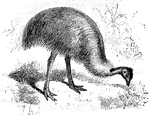
Emu
The Emu (Dromaius novaehollandiae) is a large bird of Australia in the Casuariidae family of cassowaries…
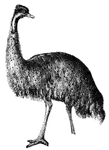
Emu
The Emu, a native of Australia, is nearly as large as the Ostrich, but has shorter legs and neck and…
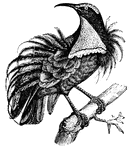
Epimachus
Little is known of this bird. Side-feathers develop in elegant panicles, while their plumage is brilliant…

Erne
"The Erne is one of the 'bare-legged' eagles. The genus includes some seven species, represented apparently…
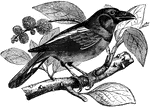
Java Eurylame
This small bird is native to Java, Sumatra, and New Guinea. It is noted for its large bill.
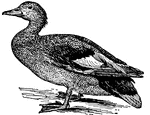
Gadwall Duck
The Gadwall (Chaulelasmus streperus) is a widely distributed duck, appearing throughout Europe and N.…
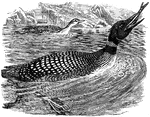
Great Northern Diver (Colymbus Glacialis)
"Narrow channels, firths and bays are its favorite resorts. There it floats, the body deeply submerged…
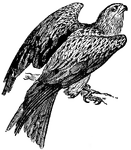
European Kite
European Kites are very miscellaneous feeders, but depend largely on offal, and in the eastern tropics…
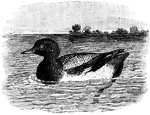
Scaup, a Common Duck
"A duck, Fuligula or Fulix marila and related species. The common scaup inhabits Europe, Asia, and North…

A Black Scoter Swimming
Melanitta americana or Œdemia nigra A large sea-duck of the genus CEdemia, belonging to the subfamily…
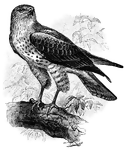
Snake Buzzard, Also Called a Short-Toed Eagle
Circaetus gallicus is a "bird of prey inhabiting all the countries bordering the Mediterranean, and…

